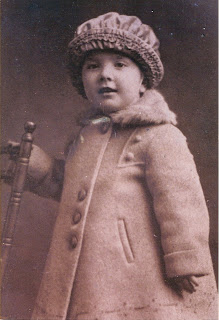Sometimes, family research is not only for discovering who our ancestors were, but for realizing who we are, too. While there is a story to be told about great-grandparents, there is also one to be found about those whose more recent deaths still leave an impact on our lives.
Yesterday, I mentioned traveling to New Mexico a few years back. While we did make the trip to Santa Fe to specifically visit the National Cemetery, we weren’t just there to remember one person. We went to pay our respects to Chris’s brother, too—and to learn how to best tell his story.
Chris has been speaking to high schoolers about the dangers of drinking and driving for over a decade, probably reaching thousands each year with his presentations done for a program called “Every 15 Minutes.” The prime reason he has had such an affinity for the program is owing to his own family story.
The “Every 15 Minutes” program is conducted at high schools just before prom or graduation, in the hopes of sparing young, promising students the agony of what really can be preventable loss. Chris spends hours at each high school and ends up falling in love with these remarkable students. When they spend time with Chris—and especially when they hear his story—they fall in love with him, too. Chris and I can be walking down the street, at the store, or just about anywhere, and some good looking guy or cute young woman will run up to him, all excited, and say, “Hey, I love you, man!” or give him a hug. That young person will turn out to be a part of the program from eight or ten years ago—still remembering him for the impact he had on students’ lives.
Why such an impact? Of course, the program is carefully designed—put together with the specific goal of being unforgettable. But I think the reason the lesson sticks is because Chris gave it a face—a story.
Although the story is really that of the Stevens family growing up in Albuquerque, it centers on the experience of Chris’s brother’s life. John Kelly Stevens, the family’s oldest child, born in England during their father’s post-war service there, spent his school years in New Mexico. As was his namesake great-grandfather, at home he was known as Kelly, while school friends knew him as John. Like his dad—and probably a good many Stevens men before him—he was fun-loving and talented, and liked to hang out with friends.
It was for details of his last party that we went back to Albuquerque to research. A different kind of story than what you’d usually find in a family history, it still holds an important place in our family’s legacy.
We spent time downtown at the main library, going through newspaper archives, finding newspaper accounts in two different publications. We traced his route home from the party, when he hitched a ride with a mere acquaintance because he had wanted to stay at the party longer than his buddies had. We attempted to locate news reels from the local television station because the family had remembered seeing the story on the late night news. We took pictures of the road, where it bends right when the driver happened to look down at something on the front seat. We even took pictures of the tree that pinned Kelly in, legs beneath the engine block.
We repeated that sad journey because we knew it held a story that might help someone else. And it has.
 Many families have a difficult story in their past. The power is in being able to find the story and bring it to light in a way that can bring good to others.
Many families have a difficult story in their past. The power is in being able to find the story and bring it to light in a way that can bring good to others.The shattered things in life often do leave traces of a story that can help others. It almost seems harder to go back and re-collect those shards and piece them together into a mosaic that makes sense to others than it was to live through it. But it can become a healing process, too.
Share your story.

















